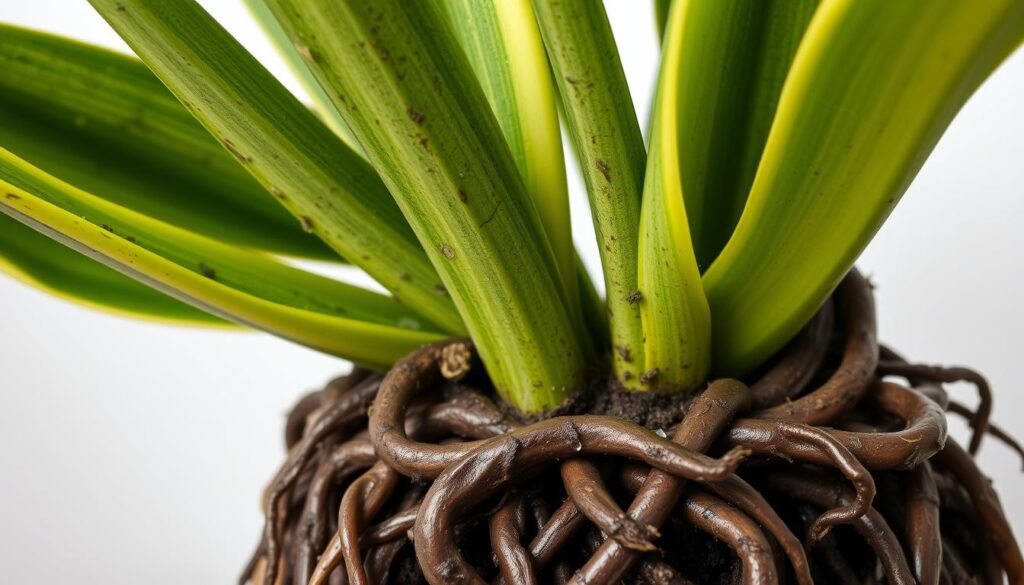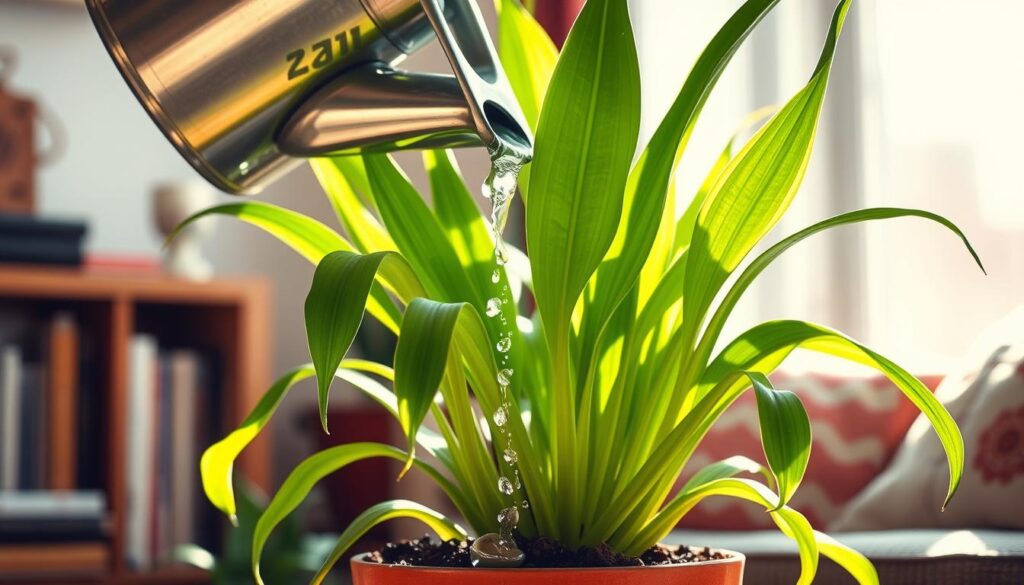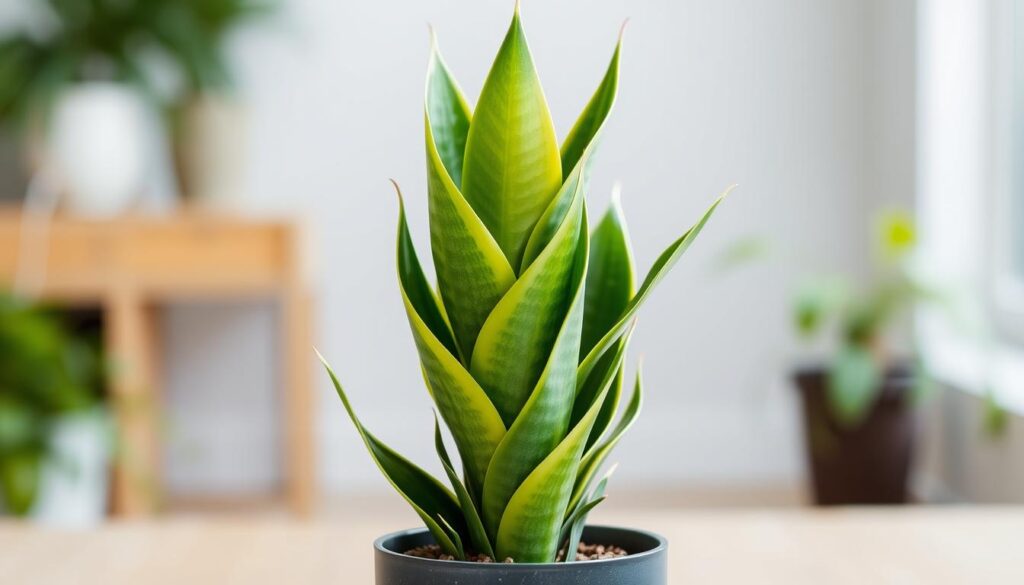As a snake plant enthusiast, I know how vital healthy roots are for these plants. Root rot is a big problem for snake plants, but you can prevent it. This guide will help you understand root rot, spot early signs, and keep your plants thriving.
It’s key to care for your snake plant’s soil and water it right to avoid root rot. By following this article, you’ll learn how to keep your snake plants lush and vibrant. This makes them a favorite among indoor gardeners.
Understanding Root Rot in Snake Plants
We love our snake plants and want them to stay healthy. Root rot is a big problem that can hurt them. We’ll talk about what causes it, how it affects plants, and how to spot it early. This way, you can help your plants stay healthy.
Common Causes of Root Decay
Snake plants often get root rot from too much or too little water. Too much water lets bad fungi and bacteria grow, harming the roots. Not enough water stresses the roots, making them sick. Knowing these causes helps prevent root rot.
How Root Rot Affects Plant Health
Root rot is bad news for snake plants. It stops them from getting the nutrients and water they need. This leads to slow growth, yellow leaves, and a sickly look. If not treated, it can kill the plant. So, it’s important to catch and fix root rot fast.
Identifying Early Warning Signs
Watching for snake plant root rot signs is key. Look for these signs:
- Discolored or mushy roots
- Wilting, yellowing, or drooping leaves
- A foul odor from the soil
- Slower growth or stunted development
Spotting these signs early lets you act fast. This helps save your snake plants from getting worse.
“Addressing root rot in snake plants requires a proactive approach, but with the right knowledge and care, you can keep your plants thriving for years to come.”
The Perfect Soil Mix for Healthy Snake Plants
Keeping your snake plant healthy means focusing on its soil needs. The best soil for snake plants drains well, is rich in nutrients, and holds just the right moisture. It’s key to avoid root rot, a big problem that can harm your plant.
For the snake plant soil requirements, aim for a mix that feels like its natural home. Snake plants love soil that breathes and drains fast. A good snake plant potting mix combines:
- 40% potting soil or cactus/succulent mix
- 30% pumice or perlite for better drainage
- 30% compost or aged bark for nutrients
This mix gives snake plants the nutrients they need and keeps water from pooling. Pumice or perlite makes the soil airy and helps water drain. Compost or bark adds vital nutrients for growth.
| Ingredient | Purpose |
|---|---|
| Potting soil/Cactus mix | Provides basic nutrient content |
| Pumice or Perlite | Improves soil drainage and aeration |
| Compost or Aged Bark | Adds organic matter and nutrients |
By meeting these snake plant soil requirements and mixing the right snake plant potting mix, your plant will flourish. This way, you can steer clear of root rot.
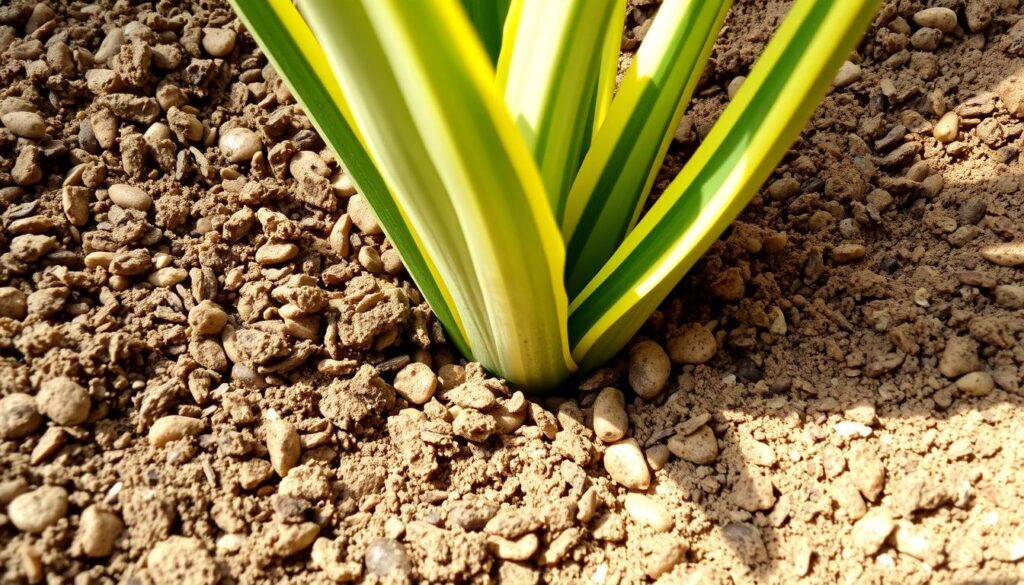
Proper Watering Techniques to Avoid Root Rot in Snake Plants
Keeping the right moisture level is key for your snake plants’ health. Overwatering and underwatering can lead to root rot. This section will show you how to water your plants right to avoid root decay.
Best Time to Water
Water your snake plants in the morning. This lets the soil soak up the water before it evaporates. Water them once a week when they’re growing fast and less often in winter. Check the soil moisture to avoid overwatering snake plants.
Correct Watering Methods
Use a gentle spray when watering. Pour water slowly and evenly around the base. Don’t get the leaves wet to prevent fungal growth. Make sure the soil is dry before watering again to avoid underwatering snake plants and avoid root rot snake plants.
Signs of Overwatering
Watch for signs of overwatering. Look for yellow or wilted leaves, mushy stems, and a bad smell from the soil. If you see these, it’s time to change your watering schedule.
By following the right watering techniques and watching your plants, you can keep them healthy and free from root rot.
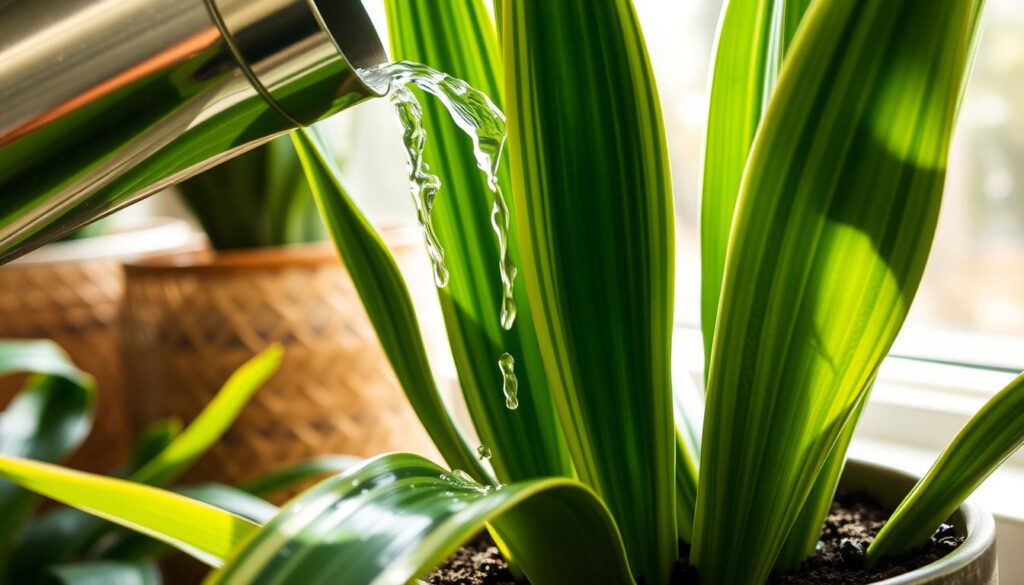
Essential Drainage Requirements for Snake Plants
Proper drainage is key for my snake plants’ health. Without it, the soil can become waterlogged, leading to root rot. I focus on the right pot and drainage to keep my plants thriving.
I choose pots with lots of drainage holes at the bottom. This lets excess water out, keeping the soil dry. The pot’s material, like terra cotta or plastic, also helps with air circulation around the roots.
To boost drainage in an old pot, I use different methods. Adding gravel or pebbles at the bottom helps water drain better. I might also drill more holes or use a mix with perlite or vermiculite for better aeration and drainage.
FAQ
What are the common causes of root rot in snake plants?
Root rot in snake plants often comes from too much water, poor drainage, and moist soil. If the soil stays wet for too long, it can cause fungal diseases and damage the roots.
How does root rot affect the overall health of a snake plant?
Root rot can really hurt a snake plant’s health. It stops the plant from getting water and nutrients, causing it to grow poorly, turn yellow, and even die if not treated.
What are the early warning signs of root rot in snake plants?
Look out for wilting leaves, yellow or brown foliage, and a bad smell from the soil. Catching these signs early can help stop the problem from getting worse.
What is the ideal soil mix for healthy snake plants?
Snake plants do best in soil that drains well but still holds some moisture. A mix of potting soil, perlite, and sand or vermiculite is perfect. It keeps the soil just right for the plant.
When is the best time to water snake plants?
Water your snake plant when the soil feels dry to the touch, usually every 1-2 weeks. Don’t water on a set schedule. The plant’s needs change with temperature and humidity.
How can I tell if I’m overwatering my snake plant?
Overwatering shows as wilted or droopy leaves, yellow or brown leaves, and a soft stem. If you see these signs, stop watering and let the soil dry out before watering again.
What are the essential drainage requirements for snake plants?
Good drainage is key to avoiding root rot. Make sure the pot has holes for water to drain. Use a potting mix with perlite or sand to help with airflow and prevent water from pooling.
How can I treat root rot in my snake plant?
If you think your snake plant has root rot, start by gently removing it from its pot. Check the roots and cut off any that are damaged or rotting. Then, repot the plant in fresh, draining soil. Let the soil dry out between waterings to avoid more damage.
